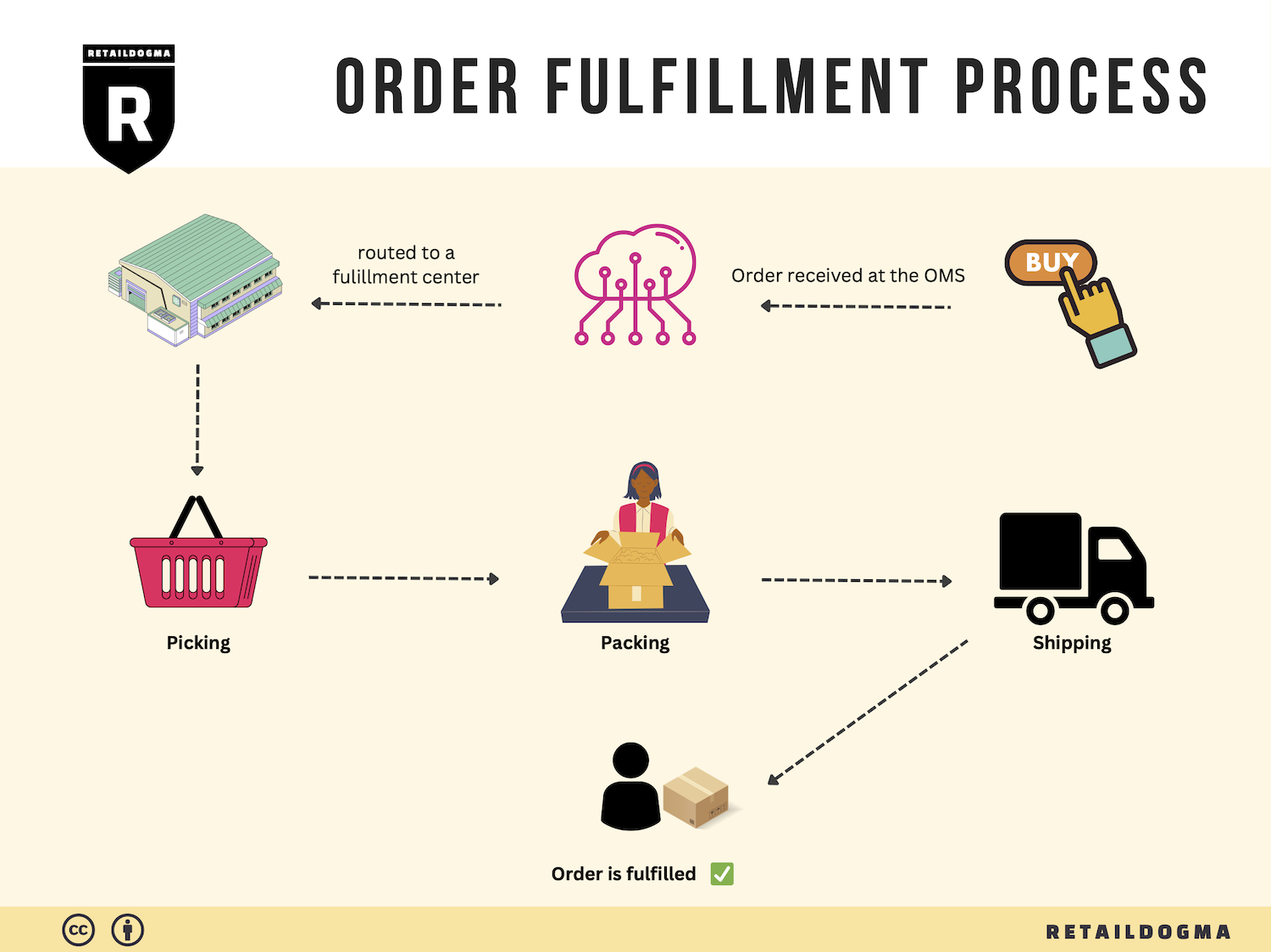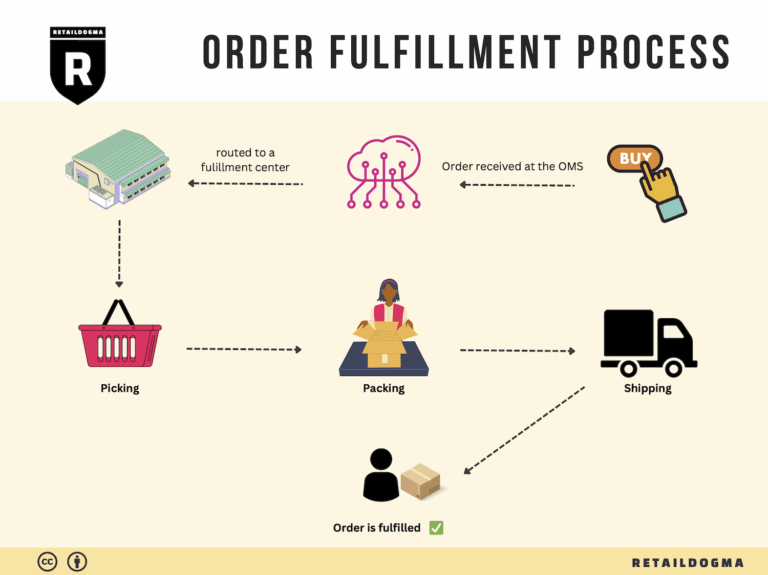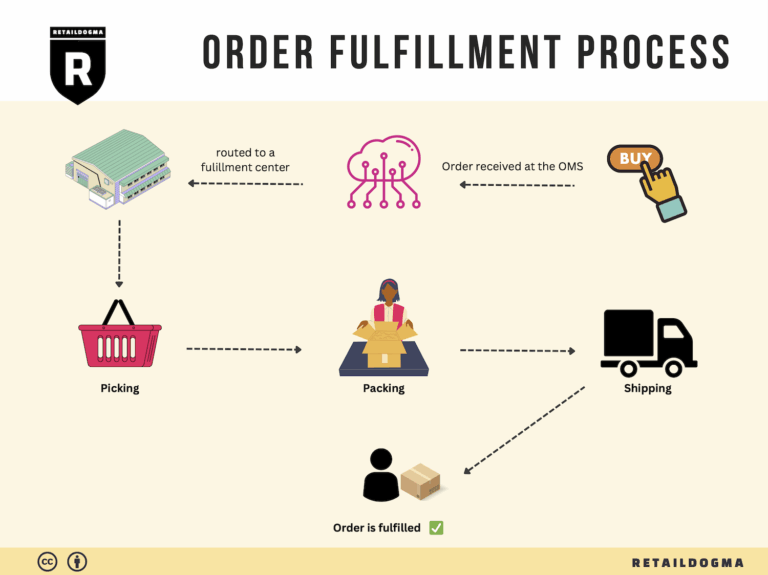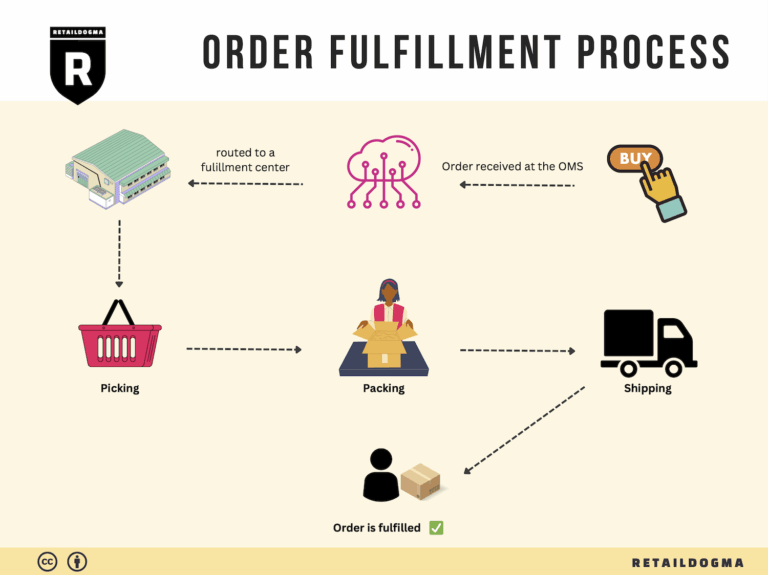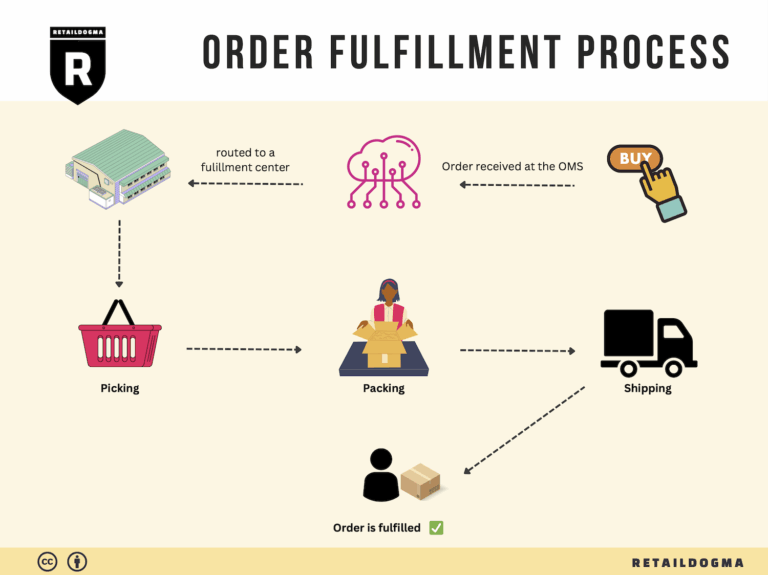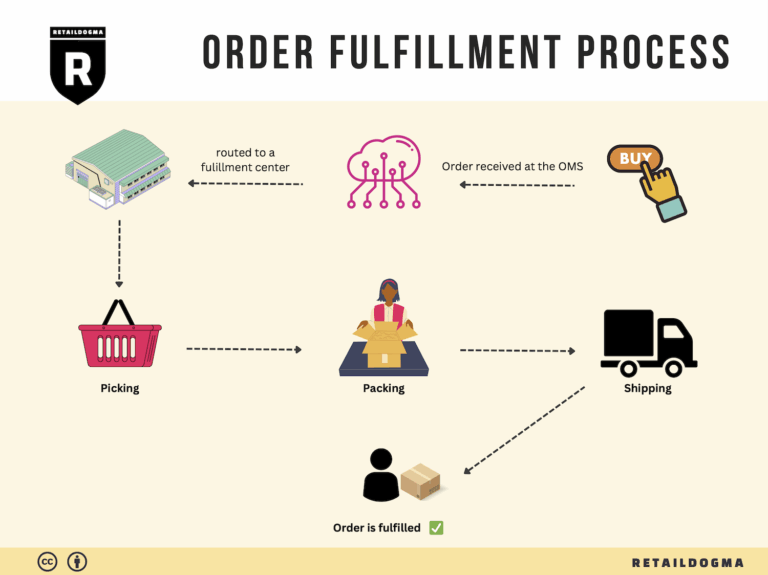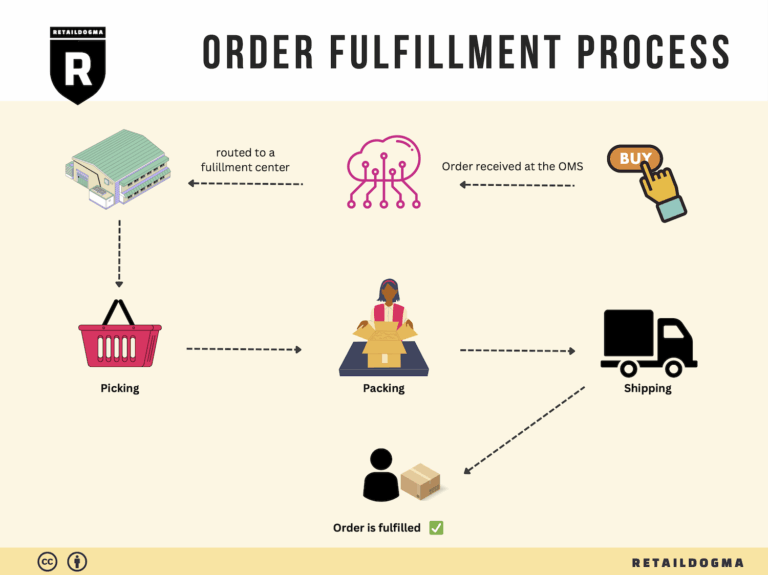What Is A Fulfillment Center? A Complete Guide (2025)
What is E-commerce Fulfillment? An Introduction for Growing Businesses
Understanding E-commerce Fulfillment: Navigating Your Growth Journey
As an e-commerce business owner, you may find yourself grappling with the complexities of packing and shipping orders. The excitement of growing sales can quickly turn into an overwhelming challenge when faced with the intricacies of logistics. Managing inventory, ensuring timely deliveries, and maintaining customer satisfaction can feel like a daunting task, especially as your order volume increases. This is where e-commerce fulfillment comes into play.
Simply put, fulfillment is the process of getting a product from your warehouse to your customer’s doorstep. It encompasses everything from receiving inventory and storing products to picking, packing, and shipping orders. For growing businesses, mastering this process is crucial for maintaining operational efficiency and enhancing customer experience.
This guide aims to demystify e-commerce fulfillment, providing you with the knowledge needed to scale your logistics effectively. We will explore various fulfillment models, including third-party logistics (3PL) and Fulfillment by Amazon (FBA), discussing their advantages and disadvantages. Understanding these options will help you determine the best fit for your business needs.
We will also delve into the core services involved in fulfillment, such as inventory management, order processing, and shipping solutions. Each service plays a critical role in ensuring that your customers receive their orders accurately and on time, which in turn drives repeat business and enhances your brand reputation.
Choosing the right fulfillment partner is another key aspect we will cover. We will provide practical tips on evaluating potential partners based on factors like scalability, technology integration, and customer service. A strong partnership can alleviate the burdens of logistics and allow you to focus on growing your business.
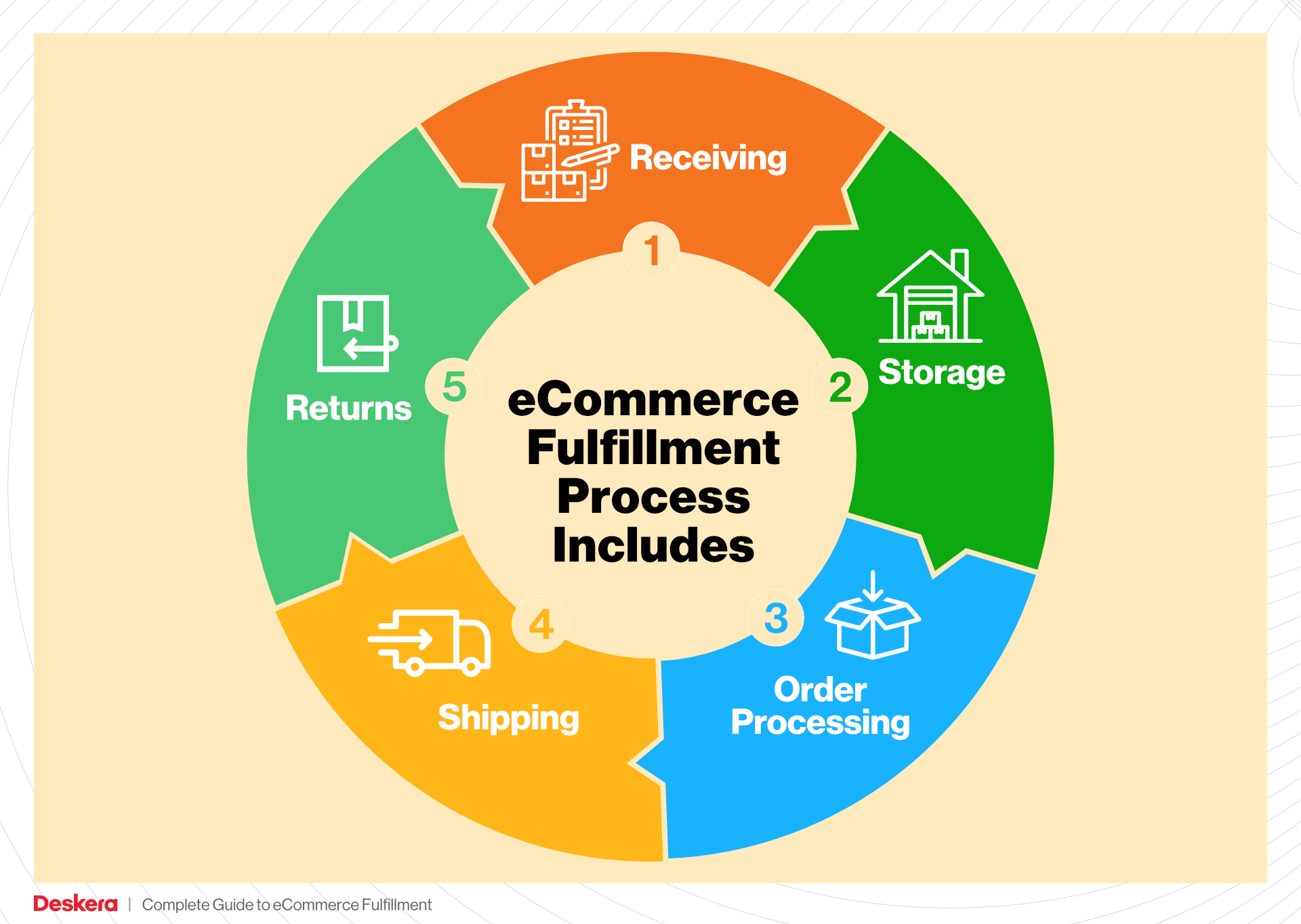
Finally, we will discuss pricing structures in fulfillment, helping you to understand the costs involved and how to budget effectively. This knowledge will empower you to make informed decisions that align with your financial goals.
The ultimate goal of this guide is to empower you to navigate the complexities of e-commerce fulfillment with confidence. By equipping yourself with the right information, you can make smart, strategic decisions about your logistics, ensuring that your business not only meets current demand but is also poised for future growth.
What You’ll Learn In This Guide
- What is E-commerce Fulfillment? An Introduction for Growing Businesses
- The Order Fulfillment Process: From ‘Buy’ Button to Customer’s Door
- Comparing Fulfillment Models: In-House vs. 3PL vs. Dropshipping
- A Deep Dive into Amazon FBA: Pros, Cons, and Who It’s For
- Core Services Offered by Fulfillment Centers
- How to Choose a Fulfillment Partner: A 6-Point Checklist
- Understanding Fulfillment Pricing: A Breakdown of Common Fees
- Frequently Asked Questions (FAQs) about Fulfillment
- Conclusion: Is Outsourcing Fulfillment the Right Move for Your Business?
- Important Disclaimer
The Order Fulfillment Process: From ‘Buy’ Button to Customer’s Door
1. Receiving Inventory
The first step in the order fulfillment process is receiving inventory. This involves the acceptance of products from suppliers or manufacturers into the warehouse. During this phase, each shipment is carefully inspected for accuracy and quality. This includes checking against purchase orders, ensuring that the correct quantities and items are received, and examining them for any damage.
This step is crucial because accurate receiving lays the groundwork for effective inventory management. Mistakes at this stage can lead to stock discrepancies, which can ultimately affect order fulfillment and customer satisfaction. Key terms associated with this process include SKU (Stock Keeping Unit), which is a unique identifier for each product, allowing for easy tracking and management within the inventory system.
2. Warehouse Storage
Once inventory is received, the next step is warehouse storage. Products are organized and stored in designated areas within the warehouse based on various criteria such as size, type, or demand frequency. This process often involves using sophisticated warehouse management systems (WMS) that optimize space and streamline the retrieval process.
Efficient warehouse storage is vital because it directly impacts how quickly orders can be fulfilled. A well-organized warehouse reduces the time spent locating items, thereby increasing overall operational efficiency. This is where the concept of bin locations comes into play, which refers to specific spots within the warehouse designated for individual SKUs, facilitating faster picking and inventory tracking.
3. Order Picking
Order picking is the process where warehouse staff retrieve the products that customers have ordered. This can be accomplished using several methods, including single order picking, batch picking, or zone picking, depending on the volume and complexity of orders. Staff members often utilize pick lists, which are documents or digital displays that detail the items and quantities needed for each order.
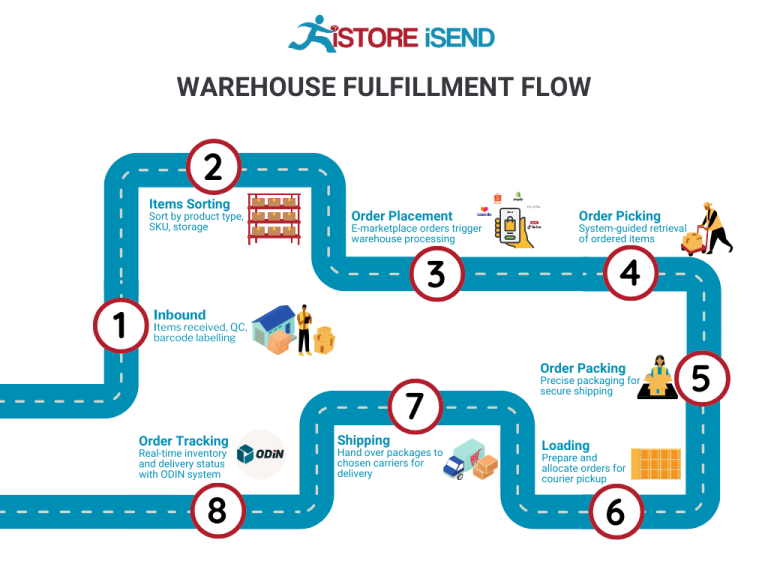
This step is significant because the accuracy and speed of order picking directly influence delivery times and customer satisfaction. Errors during this phase can lead to incorrect shipments, resulting in returns and dissatisfied customers. Efficient picking strategies, such as using technology like handheld scanners or automated picking systems, can enhance productivity and accuracy.
4. Order Packing
After the items have been picked, the next step is order packing. This involves securely packaging the products for shipment. Proper packing is essential for protecting items during transit and ensuring they arrive in good condition. This process often includes choosing the right box size, adding protective materials, and labeling packages with shipping information.
The importance of packing cannot be overstated; it affects not only the safety of the products but also the efficiency of the shipping process. Utilizing packing slips—documents that outline the contents of the package—ensures that customers receive what they ordered, while also providing information for returns if necessary. Additionally, thoughtful packaging can enhance the customer experience, contributing to brand perception and loyalty.
5. Shipping & Delivery
The final step in the order fulfillment process is shipping and delivery. This phase involves transporting the packaged orders to the customer’s location. Companies typically collaborate with various shipping carriers to optimize delivery times and costs. This process may also include the use of a Transportation Management System (TMS), which helps manage shipping routes, track shipments, and analyze shipping performance.
Shipping and delivery are critical because they represent the last interaction a customer has with the business before receiving their order. Timely and reliable delivery can significantly enhance customer satisfaction and loyalty. Furthermore, effective management of this step can help businesses scale their operations, ensuring they meet increasing demand without sacrificing service quality.
In summary, mastering the order fulfillment process—from receiving inventory to ensuring successful delivery—is essential for e-commerce businesses aiming to scale their operations effectively. By focusing on each step’s efficiency and accuracy, businesses can enhance their logistics capabilities, improve customer satisfaction, and ultimately drive growth.
Comparing Fulfillment Models: In-House vs. 3PL vs. Dropshipping
Fulfillment Model Comparison Table
| Model | Who Handles Inventory | Best For (Business Stage) | Key Advantage | Key Disadvantage |
|---|---|---|---|---|
| In-House Fulfillment | The business itself | Startups and established firms | Full control over inventory and operations | High overhead costs and resource demands |
| Third-Party Logistics (3PL) | A third-party provider | Growing businesses | Scalability and access to expertise | Less control over operations and potential hidden costs |
| Dropshipping | Supplier or manufacturer | Startups and niche markets | Low upfront investment and minimal risk | Lower profit margins and reliance on supplier reliability |
In-House Fulfillment
In-house fulfillment involves managing the entire logistics process within your own organization. This model is typically suited for startups and established businesses that have sufficient resources to maintain their own inventory, warehousing, and shipping processes. The key advantage of in-house fulfillment is the level of control it offers. Businesses can tailor their operations to meet specific customer needs, maintain strict quality control, and respond quickly to inventory changes or customer demands. However, the downside is significant; maintaining an in-house fulfillment operation can lead to high overhead costs, including warehousing, labor, and technology investments. Additionally, businesses may face challenges in scaling operations efficiently as demand fluctuates, leading to potential operational bottlenecks and inefficiencies.
Third-Party Logistics (3PL)
Third-party logistics (3PL) providers like Amware offer comprehensive logistics solutions by managing warehousing, inventory, and shipping on behalf of businesses. This model is ideal for growing companies that need to scale their operations without the burden of managing logistics internally. The primary advantage of partnering with a 3PL is the ability to leverage their expertise and resources, which can lead to improved efficiency, faster shipping times, and access to advanced logistics technology. Moreover, 3PLs can help businesses navigate complex supply chain challenges, allowing them to focus more on core competencies like marketing and product development. However, there are disadvantages to consider; businesses may experience a loss of control over their logistics operations, and there could be hidden costs associated with third-party services. It’s essential for businesses to conduct thorough due diligence to ensure that their 3PL partner aligns with their operational goals and maintains transparent pricing.
Dropshipping
Dropshipping is a fulfillment model where the retailer does not keep products in stock but instead transfers customer orders directly to the supplier, who then ships the products to the customer. This model is particularly attractive to startups and businesses targeting niche markets, as it requires minimal upfront investment and reduces the risk associated with inventory management. The key advantage of dropshipping is its low barrier to entry; businesses can offer a wide range of products without the need for significant capital investment in inventory or warehousing. However, dropshipping comes with its own set of challenges, including lower profit margins due to reliance on suppliers and potential issues with order fulfillment reliability. Since the retailer does not handle the product directly, they are also at the mercy of the supplier’s shipping times and quality control, which can lead to customer dissatisfaction if not managed properly. Businesses considering this model should carefully vet suppliers and develop strong communication channels to ensure a smooth customer experience.
Conclusion
Choosing the right fulfillment model is a critical decision that can significantly impact the efficiency, cost-effectiveness, and overall success of your e-commerce business. Each model has its distinct advantages and disadvantages, making it essential for business owners, operations managers, and entrepreneurs to assess their unique needs, resources, and long-term goals. By understanding the nuances of in-house fulfillment, 3PL partnerships, and dropshipping, businesses can make informed decisions that align with their operational capabilities and market demands. As your business scales, consider how each model can adapt to changes in your logistics strategy and customer expectations.
A Deep Dive into Amazon FBA: Pros, Cons, and Who It’s For
Understanding Fulfillment by Amazon (FBA)
Fulfillment by Amazon (FBA) is a service offered by Amazon that allows sellers to store their products in Amazon’s fulfillment centers. Amazon takes care of storage, packaging, and shipping, while also handling customer service and returns. This service enables sellers to leverage Amazon’s vast logistics network and customer base to enhance their sales potential.
When a customer orders a product, Amazon picks, packs, and ships it directly to the customer. This process not only streamlines logistics for sellers but also integrates their products into Amazon’s extensive marketplace, making it easier for customers to find and purchase items.
How FBA Works
-
Setup: Sellers create an Amazon Seller account and enroll in the FBA program. They then list their products on Amazon and prepare them for shipment to Amazon’s fulfillment centers.
-
Inventory Management: Sellers send their products to Amazon’s warehouses, where they are stored until sold. Amazon’s system helps sellers track inventory levels and provides insights into sales performance.
-
Order Fulfillment: When a customer orders a product, Amazon takes over the fulfillment process. This includes picking the item from the warehouse, packing it, and shipping it to the customer.
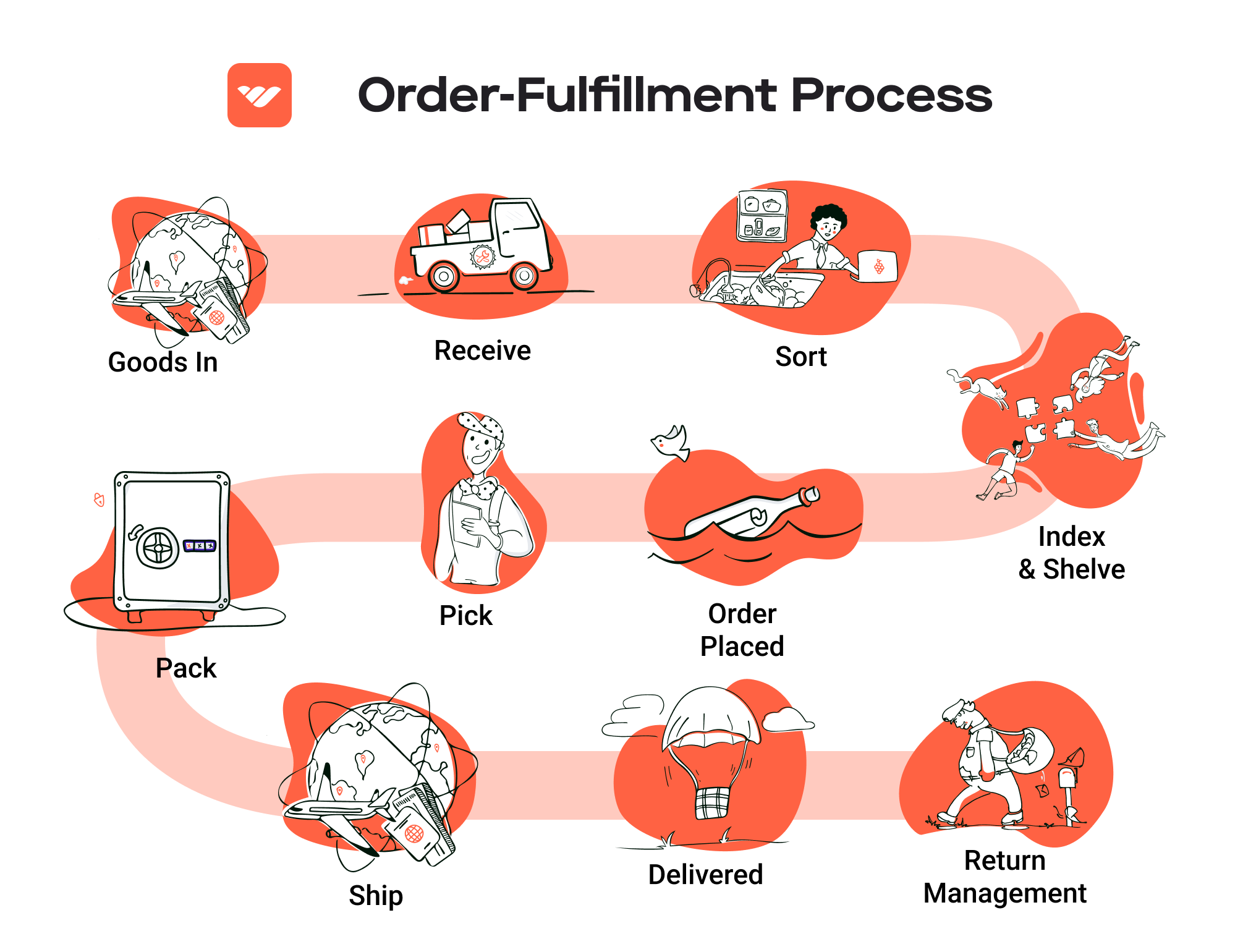
-
Customer Service: Amazon handles customer inquiries, returns, and refunds for FBA products, allowing sellers to focus on growing their business rather than managing day-to-day customer service.
-
Payment: After the sale, Amazon deducts fees associated with FBA (including storage and fulfillment fees) and deposits the remaining funds into the seller’s account.
Pros of Using FBA
1. Prime Eligibility
One of the most significant advantages of FBA is that products fulfilled by Amazon are eligible for Amazon Prime. This means that Prime members can receive free two-day shipping on these items, which greatly enhances their attractiveness. The Prime badge also instills a sense of trust and reliability in potential buyers.
2. Customer Trust
Utilizing FBA allows sellers to benefit from Amazon’s established reputation. Customers are more likely to purchase products that are sold through Amazon’s platform, knowing they can rely on Amazon’s customer service and return policies. This trust can lead to higher conversion rates and increased sales.
3. Multi-Channel Fulfillment
FBA is not limited to just Amazon sales. Sellers can use FBA to fulfill orders from other sales channels, such as their own e-commerce websites or other marketplaces. This multi-channel fulfillment capability allows businesses to streamline their logistics and offer a consistent customer experience across different platforms.
4. Time Savings
By outsourcing logistics to Amazon, sellers can save significant time and resources. Amazon manages the complexities of warehousing, shipping, and customer service, allowing sellers to focus on product development and marketing.
5. Access to Advanced Tools
Amazon provides sellers with various tools and analytics to track their sales performance, inventory levels, and customer feedback. These insights can help sellers optimize their offerings and improve their overall business strategy.
Cons of Using FBA
1. High Fees
While FBA offers convenience, it comes at a cost. Sellers are subject to various fees, including storage fees for inventory stored in Amazon’s warehouses and fulfillment fees for each item sold. These costs can add up quickly, especially for sellers with lower-margin products.
2. Strict Inventory Rules
Amazon has strict policies regarding inventory management. Sellers must maintain adequate stock levels and adhere to Amazon’s guidelines for product preparation and packaging. Failure to comply can lead to additional fees or account suspension.
3. Commingling Risks
FBA products from different sellers may be stored together, which can create risks for sellers. If a customer receives a product that was commingled with another seller’s inventory, it can lead to negative reviews or returns that impact the original seller’s reputation. Some sellers prefer to use the “Stickered Inventory” option to avoid this risk, but it may come with additional costs.
4. Limited Control over Branding
When using FBA, sellers have limited control over how their products are presented to customers. Amazon’s packaging is standardized, and sellers cannot include their branding or promotional materials, which could dilute their brand identity.
5. Dependency on Amazon
Relying on FBA can create a dependency on Amazon’s platform and policies. Any changes to Amazon’s algorithms, fee structures, or policies can directly impact sellers’ businesses. This risk necessitates careful monitoring of Amazon’s updates and an adaptable business strategy.
Who is FBA Best For?
Fulfillment by Amazon is particularly advantageous for:
-
Small to Medium-Sized Businesses: Companies that lack the resources to manage logistics effectively can benefit from FBA’s comprehensive services, allowing them to compete with larger players.
-
E-commerce Entrepreneurs: New sellers looking to establish themselves in the marketplace can leverage Amazon’s credibility and reach to gain traction.
-
Brands with High Demand Products: Sellers with popular products that can maintain high sales volume can offset the costs of FBA with the increased sales potential.
-
Multi-Channel Sellers: Businesses that sell on multiple platforms can use FBA to streamline their logistics and offer consistent fulfillment across channels.
In conclusion, while Fulfillment by Amazon presents numerous benefits, including enhanced customer trust and Prime eligibility, it also comes with challenges such as high fees and strict inventory management rules. Businesses considering FBA should carefully evaluate their specific needs and operational capabilities to determine if it aligns with their growth strategy.
Core Services Offered by Fulfillment Centers
Inventory Management & Warehousing
Inventory management and warehousing are fundamental services provided by fulfillment centers, crucial for e-commerce businesses aiming to streamline their operations. This service encompasses the systematic storage and tracking of goods, ensuring that products are readily available for order fulfillment.
A well-organized warehouse optimizes space and enhances efficiency by utilizing technologies such as barcode scanning and inventory management software. These tools allow businesses to maintain real-time visibility of stock levels, which is vital for preventing stockouts and overstock situations.
The benefits of robust inventory management are manifold. It helps e-commerce businesses reduce carrying costs, avoid unnecessary waste, and improve cash flow. Furthermore, accurate inventory tracking can significantly enhance customer satisfaction by ensuring that orders are fulfilled accurately and promptly. This level of operational efficiency not only saves time and money but also provides a competitive edge in the fast-paced e-commerce landscape.
Pick and Pack Services
Pick and pack services are integral to the fulfillment process, where products are selected from the warehouse shelves (picked) and then packaged for shipment to customers (packed). This service is particularly beneficial for e-commerce businesses that handle a diverse range of products, as it ensures that each order is accurately assembled and prepared for delivery.
Fulfillment centers employ skilled staff and advanced technologies to streamline the pick and pack process. Automated systems can facilitate quick picking based on order volume, while packing stations equipped with the right materials ensure that items are securely packaged to prevent damage during transit.
The primary advantage of efficient pick and pack services is the speed at which orders can be processed. In today’s e-commerce environment, consumers expect fast delivery, and fulfillment centers can significantly enhance a business’s ability to meet these expectations. Additionally, accurate picking reduces errors, leading to higher customer satisfaction and loyalty, as customers receive the correct items in a timely manner.
Kitting and Assembly
Kitting and assembly services involve grouping individual items together to create a single, bundled product. This service is particularly useful for e-commerce businesses that sell products requiring assembly or those that offer kits—such as gift sets or promotional bundles.
By utilizing kitting and assembly services, businesses can streamline their operations and reduce the complexity of inventory management. Instead of managing multiple SKUs, businesses can offer a single SKU for a bundled product, simplifying the ordering and fulfillment processes.
The benefits of kitting and assembly are twofold. First, it enhances the customer experience by providing ready-to-use products, which can be especially appealing in gift-giving scenarios. Second, it can lead to increased sales; bundled products often have a higher perceived value, encouraging customers to purchase more. Additionally, efficient assembly processes can reduce labor costs and lead times, ultimately contributing to a more agile supply chain.
Returns Management (Reverse Logistics)
Returns management, or reverse logistics, is a critical service offered by fulfillment centers, focusing on handling returned products efficiently and effectively. In the e-commerce sector, where return rates can be high, having a robust returns management system is essential for maintaining customer satisfaction and loyalty.
Fulfillment centers streamline the returns process by providing clear instructions for returns, processing returned items quickly, and assessing their condition for resale or disposal. This service often includes restocking, refurbishing, or recycling products, ensuring that businesses can minimize losses associated with returns.
The primary benefit of effective returns management is the enhancement of customer trust and retention. When customers know they can return products easily and receive prompt refunds or exchanges, they are more likely to make purchases. Additionally, analyzing return data can provide valuable insights into product quality and customer preferences, enabling businesses to make informed decisions that improve their offerings and reduce return rates in the future.
In conclusion, the core services offered by fulfillment centers are essential for e-commerce businesses looking to optimize their operations, improve customer satisfaction, and scale effectively. By leveraging these services—inventory management and warehousing, pick and pack services, kitting and assembly, and returns management—businesses can create a seamless and efficient logistics framework that supports growth and enhances overall performance in the competitive e-commerce marketplace.
How to Choose a Fulfillment Partner: A 6-Point Checklist
Location & Warehouse Network
The geographic location of your fulfillment partner can significantly impact shipping costs, delivery times, and overall customer satisfaction. A partner with a robust warehouse network close to your primary customer base can help ensure faster delivery and lower shipping expenses.
Questions to Ask:
– What is the location of your warehouses, and how does that align with my target market?
– How many fulfillment centers do you operate, and what regions do they cover?
– Can you provide insights into your average shipping times and costs based on my product types and target demographics?
Technology & Integrations
In today’s e-commerce landscape, technology plays a pivotal role in streamlining operations. A fulfillment partner should offer advanced technology solutions that can integrate seamlessly with your existing systems, such as your e-commerce platform, inventory management, and customer relationship management (CRM) tools.
Questions to Ask:
– What proprietary or third-party technology do you use for order management and tracking?
– How do you ensure real-time inventory visibility and order updates?
– Can your system integrate with my existing software? If so, what is the process and timeline for integration?
Specializations (e.g., Cold Storage, Oversized Items)
Different businesses have unique needs when it comes to fulfillment. If your products require special handling—such as temperature-controlled storage for perishables or specific protocols for oversized items—it’s crucial to partner with a provider that has the necessary expertise and facilities.
Questions to Ask:
– What specific specializations do you offer, such as cold storage, hazardous materials handling, or oversized items?
– Can you describe your experience with clients in my industry and how you’ve addressed their unique fulfillment challenges?
– What certifications or compliance measures do you have in place for specialized storage and handling?
Scalability & Capacity
As your business grows, your fulfillment needs will likely evolve. A good partner should be able to scale operations seamlessly to accommodate your growth without compromising service quality. This includes both physical capacity and operational flexibility.
Questions to Ask:
– How do you handle seasonal spikes in order volume?
– What is your current capacity, and how do you plan to scale operations in the future?
– Can you provide examples of how you’ve successfully supported other clients during periods of growth or change?
Pricing and Contracts
Understanding the pricing structure and contractual obligations is vital for maintaining profitability. Transparent pricing helps you budget effectively and avoid unexpected costs. Additionally, you should be aware of the terms regarding contract length, termination, and any hidden fees.
Questions to Ask:
– Can you provide a detailed breakdown of your pricing structure, including storage, fulfillment, and shipping fees?
– Are there any minimum order quantities or long-term contracts required?
– How do you handle unexpected costs, such as storage fees during peak seasons or additional handling charges?
Customer Support & Reviews
Effective customer support is essential for resolving issues quickly and maintaining smooth operations. Additionally, researching customer reviews and testimonials can provide insights into the partner’s reliability and service quality.
Questions to Ask:
– What customer support options do you offer (e.g., dedicated account manager, 24/7 support, live chat)?
– Can you share testimonials or case studies from clients in my industry?
– How do you handle disputes or issues that arise during the fulfillment process?
Conclusion
Selecting the right fulfillment partner is a critical decision that can significantly influence your e-commerce business’s success. By carefully considering each of these six points and asking the right questions, you can make an informed choice that aligns with your operational needs and growth aspirations. Take the time to assess potential partners thoroughly, as a strong relationship with a reliable fulfillment provider can propel your business forward in today’s competitive market.
Understanding Fulfillment Pricing: A Breakdown of Common Fees
Initial Setup Fees
Initial setup fees are typically incurred when you first engage with a fulfillment provider like Amware. These fees cover the costs associated with integrating your business into their system. This may include setting up your account, configuring their proprietary software to align with your operational needs, and potentially customizing the integration to ensure seamless communication between your systems. The exact amount can vary based on the complexity of the integration and the specific services you require.
To calculate these fees, providers often consider the time and resources needed for onboarding, as well as any specialized setup required for your inventory management. It’s essential to discuss the scope of services during the initial conversations to avoid unexpected charges.
Receiving Fees
Receiving fees are charged when your products are delivered to the fulfillment center. These fees cover the labor and handling costs associated with unloading, inspecting, and storing the incoming goods. The calculation of receiving fees can depend on several factors:
- Volume of Goods: The total number of pallets or items received will influence the fee.
- Complexity of Inspection: If items require detailed inspection or specialized handling (such as fragile items), additional charges may apply.
- Labor Costs: The specific labor rates at the fulfillment center can also impact the total receiving fee.
It’s advisable to clarify the fee structure beforehand, particularly if you expect to receive large or varied shipments.
Storage Fees (per pallet/bin)
Storage fees are incurred for the space your inventory occupies within the fulfillment center. These fees are typically calculated on a per pallet or per bin basis, with the cost varying based on the size of the items and the location of the warehouse. Factors influencing storage fees include:
- Duration of Storage: The longer you store your items, the higher the cumulative fees. Some providers may offer discounts for longer-term storage.
- Type of Storage: Temperature-controlled or specialized storage options may attract higher fees due to additional operational costs.
For businesses with fluctuating inventory levels, understanding the terms of storage fees is crucial. Some providers offer tiered pricing structures that can help mitigate costs during slower sales periods.
Pick & Pack Fees (per item/order)
Pick and pack fees are charged for the process of selecting items from inventory and preparing them for shipment. This is a critical component of fulfillment services and can be calculated in several ways:
- Per Item: This model charges a fixed fee for each item picked and packed. This is common in e-commerce where order sizes can vary significantly.
- Per Order: Some providers may charge a flat fee per order, regardless of the number of items included. This can be beneficial for businesses with larger orders.
- Complexity of Packaging: If your products require special packaging or labeling, additional fees may apply.
Understanding the pick and pack fee structure is vital, especially if you anticipate varying order sizes. Negotiating these fees based on your order volume can also lead to more favorable terms.
Shipping Fees
Shipping fees represent the costs associated with transporting your products to the end customer. These fees can vary significantly based on:
- Shipping Method: Different methods (standard, expedited, international) come with varying costs. Providers like Amware often offer multiple options, allowing you to choose based on urgency and budget.
- Distance: The shipping destination plays a crucial role in determining costs; longer distances typically incur higher fees.
- Weight and Dimensions: Shipping costs are often calculated based on the weight and size of the package. Oversized or heavy items may attract additional surcharges.
To optimize shipping costs, it’s beneficial to work closely with your fulfillment provider to understand their shipping partnerships and negotiate rates based on your expected shipping volume.
Tips for Getting an Accurate Quote
When seeking an accurate quote for fulfillment services, consider the following strategies:
-
Be Transparent About Your Needs: Provide detailed information about your inventory, expected order volume, and any specific requirements you may have. This will help the provider give you a more tailored quote.
-
Ask About All Fees: Inquire about all potential fees, including hidden costs that might arise during peak seasons or for special handling.
-
Request a Breakdown of Charges: A detailed breakdown of each fee type can provide clarity and help you understand where your money is going.
-
Consider Long-Term Needs: If you plan to scale your business, discuss potential adjustments to pricing as your volume increases. Some providers may offer discounts for higher volumes or long-term contracts.
-
Evaluate Multiple Providers: Don’t hesitate to compare quotes from different fulfillment providers. This can give you leverage in negotiations and help you find the best fit for your business needs.
By understanding these common fulfillment pricing models and actively engaging in the quoting process, you can better manage your logistics costs and ensure that your e-commerce operations are both efficient and scalable.
Frequently Asked Questions (FAQs) about Fulfillment
1. What is Amware Fulfillment?
Amware Fulfillment refers to the comprehensive logistics and supply chain solutions provided by Amware, a third-party logistics (3PL) provider. This includes services such as warehousing, order processing, shipping, and inventory management, tailored to meet the specific needs of e-commerce businesses looking to scale their operations efficiently.
2. How does Amware’s fulfillment process work?
Amware’s fulfillment process involves several key steps: receiving inventory, storing products in secure and organized facilities, processing orders as they come in, picking and packing items for shipment, and finally, shipping them to the end customer. Throughout this process, Amware utilizes proprietary software to manage inventory and ensure real-time visibility for clients.
3. What’s the difference between a warehouse and a fulfillment center?
A warehouse primarily serves as a storage space for goods, while a fulfillment center is a specialized type of warehouse designed to manage the entire order fulfillment process. Fulfillment centers focus on quickly processing orders, picking and packing items, and shipping them directly to customers, often incorporating advanced technology to streamline these operations.
4. What is a 3PL?
A 3PL, or third-party logistics provider, is a company that offers outsourced logistics services to businesses. This can include warehousing, transportation, inventory management, and order fulfillment. Partnering with a 3PL like Amware allows businesses to leverage their expertise and resources, ultimately improving efficiency and scalability.
5. How much do fulfillment services cost?
The cost of fulfillment services can vary widely based on several factors, including order volume, storage needs, shipping methods, and additional services such as kitting or returns management. Amware provides tailored pricing models that reflect the specific needs and scale of your business, ensuring cost-effectiveness and transparency.
6. How can Amware help with scalability challenges?
Amware addresses scalability challenges by offering flexible solutions that can grow alongside your business. Whether you need to increase storage capacity, manage fluctuating order volumes, or expand to new markets, Amware’s dedicated team and customizable services ensure that your logistics operations can scale efficiently.
7. What types of businesses benefit from Amware Fulfillment?
Amware Fulfillment caters to a diverse range of businesses, particularly e-commerce companies, retailers, and manufacturers. Whether you’re a startup or an established enterprise, Amware can provide the necessary logistics support to enhance operational efficiency and customer satisfaction.
8. How does Amware ensure accuracy in order fulfillment?
Amware employs rigorous quality control measures throughout the fulfillment process. This includes detailed inventory management systems, regular audits, and trained staff who are committed to accuracy. Their proprietary software also facilitates real-time tracking and reporting, minimizing errors and enhancing accountability.
9. Can Amware handle international shipping?
Yes, Amware is equipped to manage international shipping logistics. They have established partnerships with a network of carriers and can navigate the complexities of cross-border shipping, including customs clearance and compliance with international regulations.
10. How does Amware’s customer service operate?
Amware prides itself on providing top-ranked customer service without the use of call centers. Clients receive direct access to knowledgeable and experienced support teams who are dedicated to resolving inquiries and providing assistance promptly, ensuring a seamless experience throughout the logistics process.
Conclusion: Is Outsourcing Fulfillment the Right Move for Your Business?
Assessing the Value of Outsourcing Fulfillment
Outsourcing your fulfillment can be a transformative decision for your business, offering several key benefits that are essential for scaling operations. Firstly, partnering with a reliable fulfillment service allows you to save valuable time. Instead of managing logistics and supply chain complexities, you can focus on core business activities such as marketing and product development. This shift not only enhances your operational efficiency but also allows for a more strategic approach to growth.
Secondly, outsourcing fulfillment provides the scalability needed to adapt to market fluctuations. As your sales increase, a dedicated fulfillment partner can manage the rising demand without the need for significant investments in infrastructure or resources. This flexibility is crucial for e-commerce businesses looking to seize opportunities without being hindered by logistical constraints.
Additionally, leveraging the expertise of a fulfillment provider brings a wealth of knowledge and best practices to your operations. A partner like Amware, with over 70 years of experience, can guide you through the intricacies of logistics, regulatory compliance, and transportation management. Their tailored solutions and proprietary technology ensure that your fulfillment process is optimized for efficiency and effectiveness.
However, the success of outsourcing fulfillment hinges on choosing the right partner. It’s essential to align your business goals with the capabilities of the fulfillment service you select. A thorough audit of your current shipping processes is a strategic first step in determining if a fulfillment partner is the right next move for your business.
By evaluating your logistics needs and exploring potential partnerships, you can position your business for sustained growth and success in the competitive e-commerce landscape. Take the time to assess your options, and you may find that outsourcing fulfillment is not just a choice, but a vital strategy for your business’s future.
Important Disclaimer
⚠️ Important Disclaimer
The information in this guide is for educational purposes. Fulfillment services, pricing, and platform features change frequently. Always conduct your own due diligence and consult with providers directly before making business decisions.
